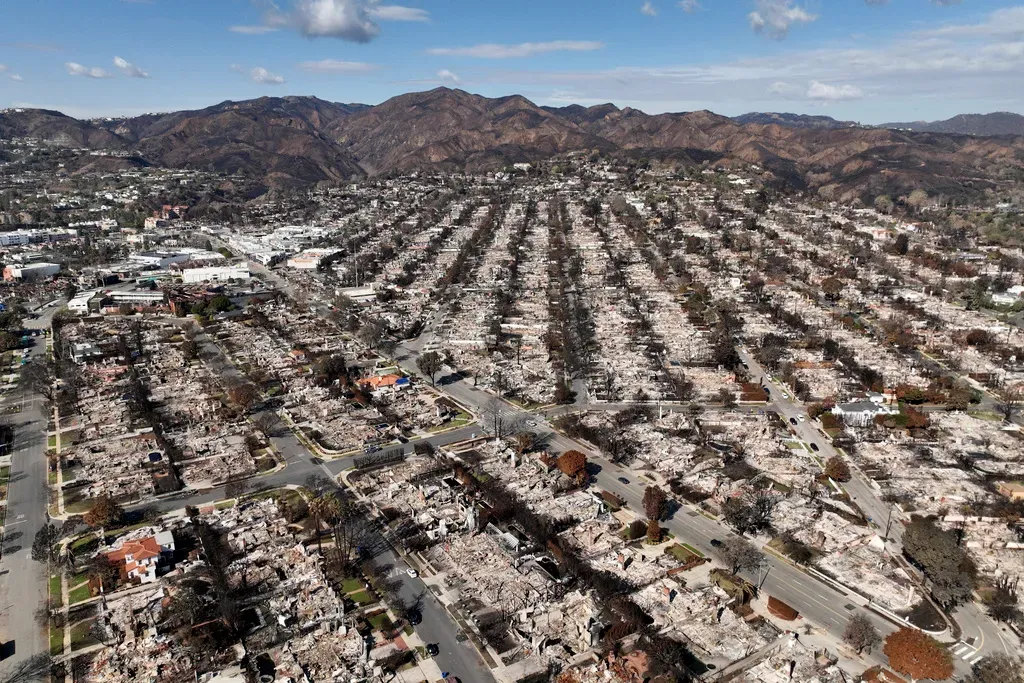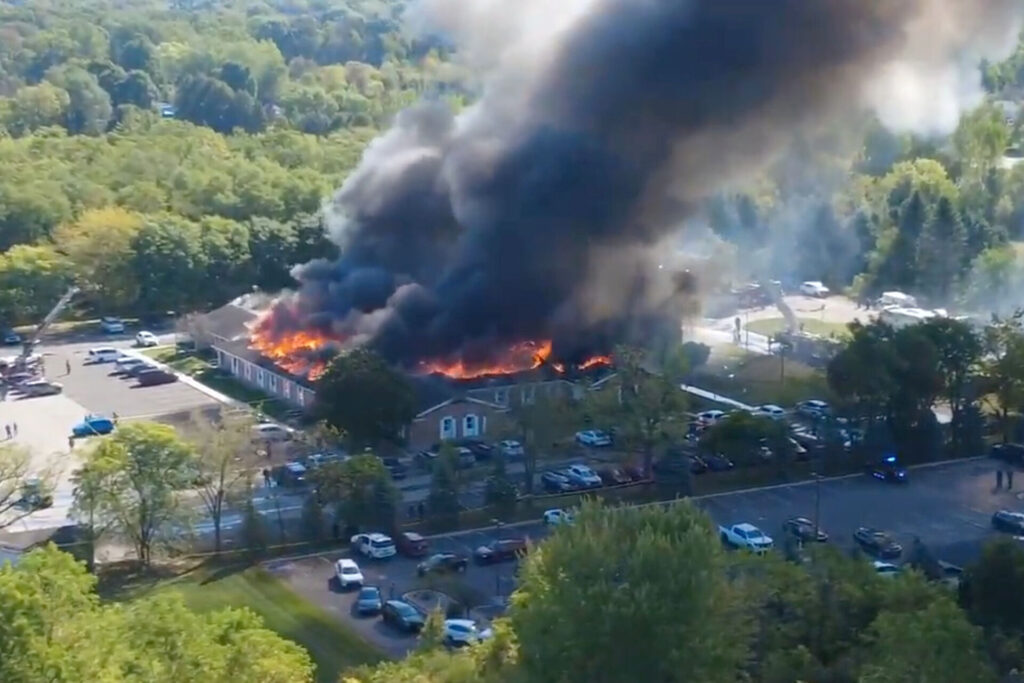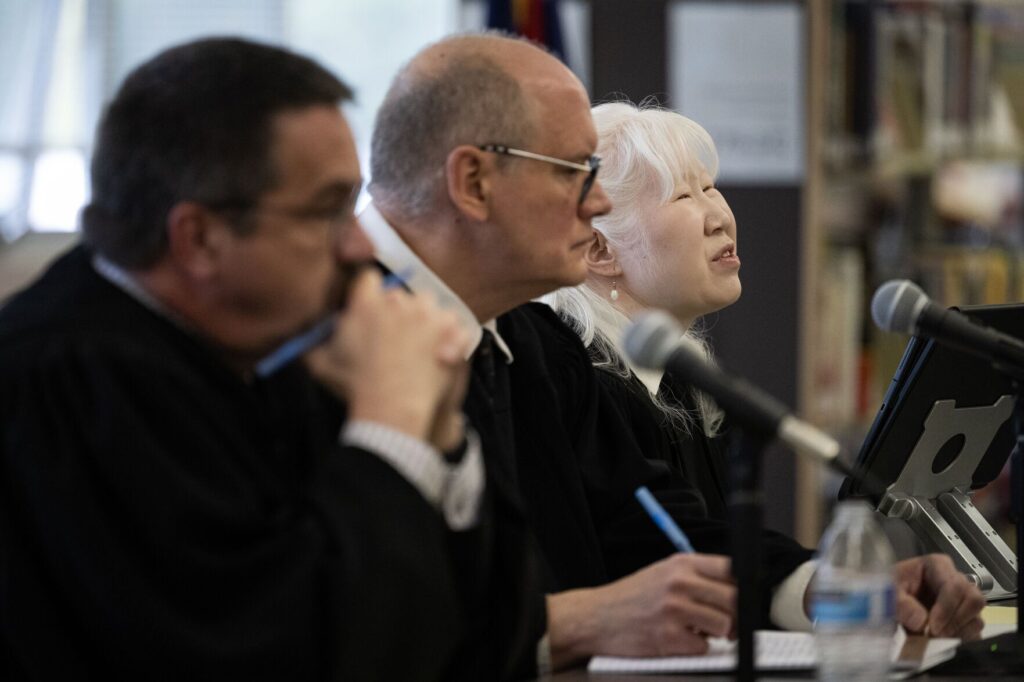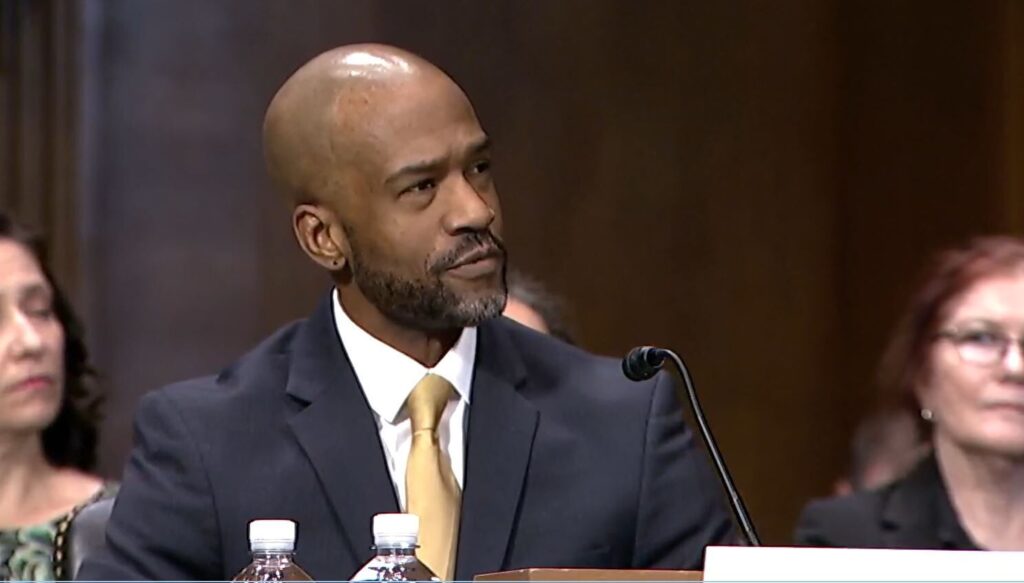As ‘transit-oriented’ law takes hold in Colorado, some see erosion of home rule | ANALYSIS
A new law that mandates more than 30 Front Range municipalities incorporate state housing density goals along transit routes will lead to messy conflicts over contractual obligations and yet another erosion of Colorado’s long history of local control over zoning and building regulation, according to critics.
Supporters, on the other hand, argue that the high cost of housing is a problem that needs to be fixed, and Coloradans don’t care who solves it — their local government or state actors.
“It’s certainly arguable that the reasonable expectations of parties to contracts could be adversely affected by state regulation,” said Jack Luellen, special counsel at the Buchalter law firm. “And it really leaves the homeowner or the landowner that bought into an area with certain expectations and executed contracts based on that — to have that materially changed by a state statute — is a significant reach at a minimum.”
“The idea has always been that there are certain elements that are particularly local in focus and ought to be subject to local control. There’s nothing that I can think of that’s much more local than your residence and your neighborhood,” he said.
To backers of the new law, housing and transit go hand in hand, and the new law would not only save Coloradans money but also help them “live where they want, with access to what they need,” as Gov. Jared Polis declared when he signed the legislation.
They added that the land use and “housing reform” that lawmakers adopted will go a long way toward reducing greenhouse gas emissions in Colorado by “(boosting) the effectiveness of transit and multimodal strategies” via “increasing housing opportunities near transit stations, near job centers, and within walkable neighborhoods.”
Critics: State is dismantling home rule
The framework was outlined in Polis’ recently released “Colorado Transportation Vision: 2035,” which calls for significantly increasing housing density and transit alternatives in nearly three dozen communities along the Front Range. It also followed the passage of House Bill 24-1313, which requires affordable housing to be constructed adjacent to transit.
Critics argued that this latest move out of the state Capitol violates Colorado’s long constitutional history of local control of zoning and the regulation of buildings.
Home rule municipalities and counties have been integral to Colorado’s history as a state, its establishment by the citizens of the Colorado Territory, and its development as a sovereign state, said Paul Seby, an environmental attorney and partner at Greenburg Traurig.
“Colorado has already said how they want it to go,” Seby said. “They want to have home rule, and that was a choice that was made by the legislature, and now it’s just being swept away in the name of climate change without regard for the reasons it was put in place in the first place.”
That new law applies to municipalities with a population of at least 4,000 residents that lie within what’s called a metropolitan planning organization (MPO). Colorado has five MPOs: the Denver Regional Council of Governments, the North Front Range MPO, the Pikes Peak Area Council of Governments, the Pueblo Area Council of Governments, and the Grand Valley MPO.
Notably, the new law prohibits these local governments — extending from Douglas County to Ft. Collins — from restricting landowners or developers who want to build accessory dwelling units, sometimes called “granny flats,” on property zoned for single-family homes.
It requires these “transit-oriented” communities to submit a “housing opportunity goal report” to the Department of Local Affairs. The preliminary report is coming up fast — it’s due by January 2025; they need to submit another report by December 2026.
That report must, among other things, calculate a “housing opportunity goal to determine a target average zoned housing density.”
One of its goals is to “improve regional collaboration and outcomes by reducing the ability of individual local governments’ land use restrictions to negatively influence regional concerns such as housing affordability, open space, traffic, and air pollution.”
This top-down control of local decision making is the very reason that home rule was enshrined in Article XX of the state constitution, according to the Colorado Municipal League.
In 1894, the City of Denver and Colorado Gov. Davis H. Waite very nearly came to armed conflict over a dispute between the governor and two people he had appointed to the Denver Fire and Police Commission who refused to follow his orders and refused to leave office, the municipal association said.
Violence was narrowly avoided after both sides backed down, the group said.
The dispute arose because Denver and all other municipalities were controlled by the governor and state legislature and had little power to direct their own development. The concept of home rule had not taken root in Colorado at the time.
Then came the Progressive Era, and in 1909 the state legislature added the home rule policy to the Colorado Constitution. This left control of most municipal functions, including law enforcement and building codes, up to the people of the municipality and prohibited the state from interfering with local control under most circumstances.
At the time, the Progressive thinking was that municipalities should be regulated as close to the residents as possible to allow for realistic democratic control of their communities. Under that thinking, keeping the state out of local affairs could prevent many problems with corruption, patronage and dictatorial state government, according to the Colorado Municipal League.
Local land use in the era of ‘climate change’ advocacy
The Home Rule Amendment has been amended several times but has endured since 1909.
Now, some legal experts argue that Polis’ zeal to curb carbon emissions and increase affordable housing and transit has eviscerated the purpose and intent of constitutional home rule.
“I feel very strongly that the efforts of the Colorado legislature to, in my opinion, usurp various aspects of local land use planning is contrary to home rule,” Former state Attorney General and former Mayor of Colorado Springs John Suthers told The Denver Gazette in an interview.
“I think that totally ignores the historical realities of land use,” Suthers said. “Land use has always been a matter of local control and municipalities have interests in sufficient housing and all the things that they say is why they need to get involved in these areas.”
“And I would suggest that nothing, in particular, has happened in the last couple of years that all of a sudden this should be an appropriate area for state mandates and dictates, rather than letting home rule local municipalities decide for themselves what’s in the best interest of their community,” Suthers added.
In assuming this power, the Colorado General Assembly offered several reasons why increased housing density in “transit-oriented” communities makes it necessary to classify zoning density in the affected municipalities as a matter of state interest, giving lawmakers the legal authority to impose regulations.
One of those elements is “climate change.”
In pushing for the law, supporters said the changes it seeks would mean people save on transportation costs by living near transit. It would also mean owning fewer vehicles, and traveling to work without driving. Driving less, the new law said, “reduces greenhouse gas emissions and air pollution.”
The text of the law concluded: “Therefore, the general assembly finds, determines, and declares that the lack of housing supply and unsustainable development patterns require a statewide solution that addresses local government policies that effectively limit the construction of a diverse range of housing types in areas already served by infrastructure or in close proximity to jobs and public transit.”
Cost of housing is ‘top of mind to all Coloradans’
Kevin Bommer, executive director of the Colorado Municipal League, told The Denver Gazette that many municipalities have already been moving toward higher density goals but goals which still preserve their community vision and residents’ desires. He called lawmakers’ preemptive action an overreach.
“I don’t think that housing and housing availability is going away anytime soon, but at the same time, it’s important to recognize that when you have local governments that are willing participants in a conversation while at the same time wanting to ensure that their ability to preserve their home rule authority, as well as solve local problems locally remains intact — there’s a path forward,” Bommer said.
Bommer said most municipalities understand the governor’s vision and generally laud him for it, but they still want to control their destinies.
“From the municipality’s perspective, we applaud the governor’s vision. I think it absolutely fits with what municipalities think is the key to both having people live and work closer together in their communities,” he said. “We also believe that preserving community character makes sense and ensuring that a resident of a municipality can address issues directly with their governing body and not have to go to state legislature somewhere or state agency to deal with what are really local issues.”
In a statement to The Denver Gazette, the governor’s office said that the high cost of housing is “top of mind to all Coloradans.”
“The governor and his team took significant feedback from local governments across Colorado and earned the support of many members of city councils and county commissioners for the legislation,” said Eric Maruyama, a spokesperson for the governor.
Maruyama added: “Governor Polis is proud of Colorado’s progress in breaking down barriers to housing so that Coloradans can afford to live near transportation and job centers. The high cost of housing is top of mind to all Coloradans — whether they see that through rent or mortgage, and it’s critical to address these issues at a regional and statewide scale.”
“High cost of housing is a statewide issue that Coloradans expect Governor Polis to fix,” he added. “People don’t care whether it’s their mayor, commissioner, governor or president who gets it done; we just want housing to be more affordable.
Rep. Steven Woodrow, a Democrat from Denver and one of the law’s sponsors, said that, with the rapid growth of the Front Range, policymakers have the opportunity to adopt smart and strategic steps.
“There is an obvious need for housing that hardworking Coloradans can afford, and with the rapid growth of the Front Range, we have the opportunity to build in a smart, strategic way by coordinating transit centers with higher-density housing opportunities,” he said. “We need all hands on deck to tackle the housing affordability crisis, which is why we passed HB24-1313 to incentivize local governments to increase housing near jobs and transit hubs.”
He added: “These local governments will have the support of multiple state departments to develop goals and receive grant money from the new $35 million Transit-Oriented Communities Infrastructure Fund.”
Woodrow also maintained that the new law still offers local jurisdictions some “flexibility.”
“We’re giving communities the flexibility to build in a way that works for their needs while increasing our housing supply, reducing traffic and helping Colorado meet its climate goals,” he said.











